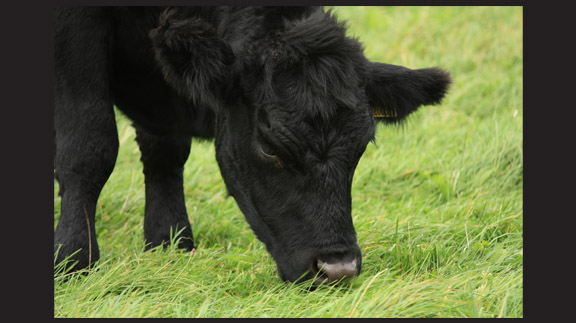Farm & Ranch
Long-term ranching outlook to highlight Jan. 14-15 Southwest Beef Symposium in Amarillo

By: Kay Ledbetter
Writer: Kay Ledbetter, 806-677-5608, [email protected]
Contact: Dr. Ted McCollum, 806-677-5600, [email protected]
AMARILLO – Big-picture emerging issues in the beef and ranching industries will be addressed at the Southwest Beef Symposium, jointly hosted by the Texas A&M AgriLife Extension Service and New Mexico State University Cooperative Extension Service.
This year’s conference, themed “Looking to the Future,” is set for Jan. 14-15 at the Wyndham Garden Hotel, 3100 Interstate 40 West in Amarillo.
“After some very rough years of drought, we will address issues of concern to the industry at large, but also at the ranch level,” said Dr. Ted McCollum, AgriLife Extension beef cattle specialist in Amarillo. “Hopefully, we have turned the corner and are beginning to stabilize the national cow inventory.”
Registration is $80 and includes a steak dinner on Jan. 14, lunch on Jan. 15, refreshments and symposium proceedings. Registration is required by Jan. 9 and seating is limited to 150, McCollum said, advising participants to register early. Others will be put on a waiting list.
Register online at http://agriliferegister.tamu.edu or by phone at 979-845-2604.
The opening session from 1-5 p.m. on Jan. 14 will include:
– The Beef Industry: What’s in Store Over the Next Five Years and Next 10 Years?, Dr. Darrell Peel, Oklahoma State University, Stillwater, Oklahoma.
– Ranching Strategies for the Long Term, Clint Richardson, Triangle Ranch, Paducah.
– Regulatory Issues Facing the New Mexico and Texas Cattle Industry, Karen Cowen, New Mexico Cattle Growers Association, Albuquerque, New Mexico; and Ross Wilson, Texas Cattle Feeders Association, Amarillo.
– Where Do I Go to Get Help with Regulatory and Legal Issues on My Property?, Tiffany Dowell, AgriLife Extension agricultural law specialist, Amarillo.
Jan. 15 issues and speakers will be:
– Rangeland Resource Management in the Panhandle: A Long-Term Perspective, Andrew Bivins, JA Ranch, Amarillo.
– Tipping Points for Juniper and Mesquite Control: Canopy Cover and Forage Production, Dr. Jim Ansley, Texas A&M AgriLife Research rangeland ecologist, Vernon.
– Evaluating the Current Costs and Future Value of Rangeland Improvement Practices, Dr. Richard Connor, rangeland economist, Texas A&M University, College Station.
– Climate and Weather Outlook: Better Days Ahead?, Brian Bledsoe, chief meteorologist, KKTV, Colorado Springs, Colorado.
– Heifer Development Strategies, Dr. Andy Roberts, U.S. Department of Agriculture-Agricultural Research Service Livestock and Range Research Laboratory, Fort Keogh, Montana.
– Genetic Management Tools for Commercial Cow-Calf Producers, Dr. Joe Paschal, AgriLife Extension livestock specialist, Corpus Christi.
– Bull Performance in the Pasture: What We Know; What We Are Learning, Dr. Bruce Carpenter, AgriLife Extension livestock specialist,Ft. Stockton.
For more information, go to the symposium website http://aces.nmsu.edu/ces/swbeef/ or contact McCollum at 806-677-5600 or [email protected] .
-30-
Farm & Ranch
Acorn Toxicity

By Barry Whitworth, DVM, MPH
With the prolonged drought, most pastures in Oklahoma end up in poor condition. With the lack of available forage, animals may go in search of alternative foods.
If oak trees are in the pastures, acorns may be a favorite meal for some livestock in the fall. This may result in oak poisoning.
Oak leaves, twigs, buds, and acorns may be toxic to some animals when consumed.
To read more, pick up a copy of the November edition of North Texas Farm & Ranch magazine, available digitally and in print. To subscribe by mail, call 940-872-5922.

Farm & Ranch
Silver Bluestems

By: Tony Dean
There are a handful of grasses on North Texas grazing lands ranchers need to know, not because they are highly desirable, but rather because they are not of much value. I call them “decom” plants, which is am acronym for “Don’t Ever Count On Me.” Silver bluestem is a “decom” grass.
Silver bluestem is a perennial which grows in all areas of Texas. It can survive in almost all soil types, and in full sun conditions or in semi shade. It grows up to three feet tall and is easily recognized with the presence of the white fuzzy seed head. Also, one of the identifying characteristics of Silver bluestem is a bend in the stems at each node, causing the plants to take on a rounded shape as they mature.
To read more, pick up a copy of the November edition of North Texas Farm & Ranch magazine, available digitally and in print. To subscribe by mail, call 940-872-5922.

Farm & Ranch
Meanwhile Back At The Ranch

By: Rayford Pullen
Fall is here which means winter is closing in on us and before we officially get into winter, we need to make sure our factories are either producing or will be producing in a few months.
We have been pregnancy testing our cows this fall and if they are not bred or nursing a calf, we are bidding them adios. With annual costs somewhere between $900.00 and $1,000.00 per cow, those cows not producing a live weaned calf are costing us quite a bit.
To read more, pick up a copy of the November edition of North Texas Farm & Ranch magazine, available digitally and in print. To subscribe by mail, call 940-872-5922.
-

 Country Lifestyles2 years ago
Country Lifestyles2 years agoScott & Stacey Schumacher: A Growth Mindset
-

 Country Lifestyles8 years ago
Country Lifestyles8 years agoStyle Your Profile – What your style cowboy hat says about you and new trends in 2017
-

 HOME8 years ago
HOME8 years agoGrazing North Texas – Wilman Lovegrass
-

 Equine1 year ago
Equine1 year agoThe Will to Win
-

 Country Lifestyles5 years ago
Country Lifestyles5 years agoAmber Crawford, Breakaway Roper
-

 Outdoor9 years ago
Outdoor9 years agoButtercup or Primrose?
-

 Country Lifestyles8 years ago
Country Lifestyles8 years agoJune 2016 Profile – The man behind the mic: Bob Tallman
-

 Country Lifestyles8 years ago
Country Lifestyles8 years agoDecember 2016 Profile, Rusty Riddle – The Riddle Way




